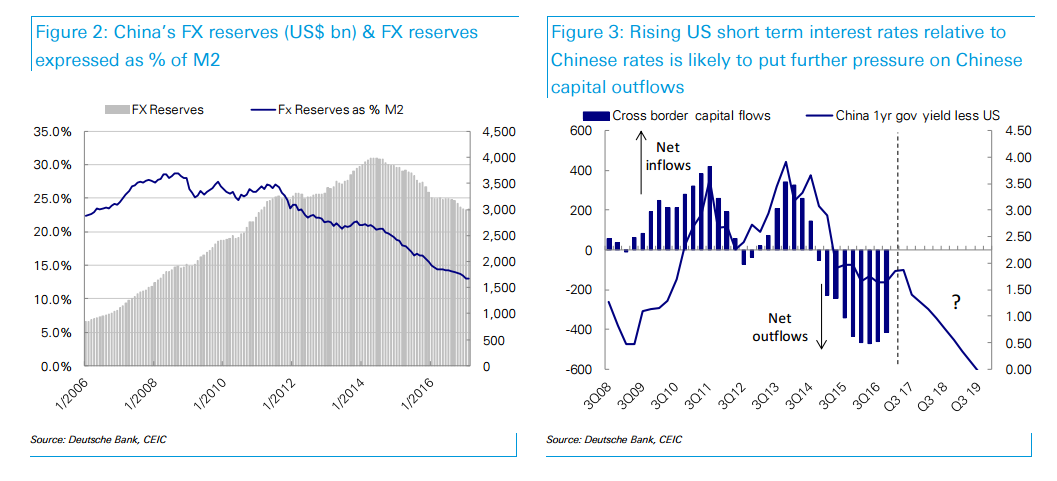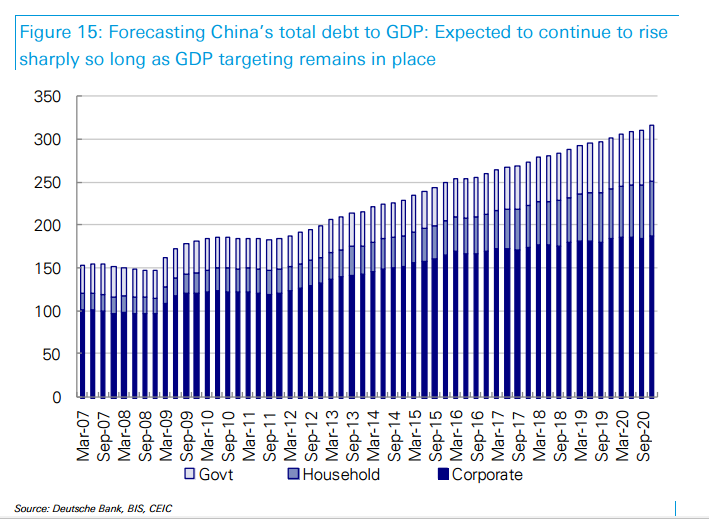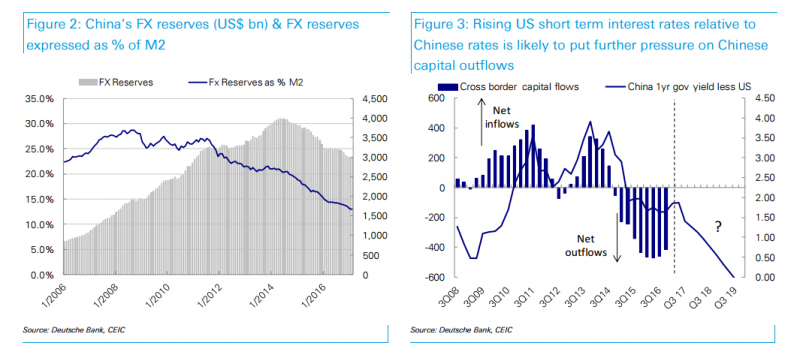Chinese financial engineers are currently in the process of testing what it calls the ‘Impossible Trinity’ of market feats, a Deutsche Bank report says. The level of difficulty is high as China walks a debt tightrope with rising interest rates potentially creating a tricky headwind as China’s debt servicing costs reach levels hard to manage.

Can capital controls mix with an independent monetary policy in China?
The past few weeks have seen Chinese interest rates start to rise, the April 7 Deutsche Bank report noted. Titled “China Debt: Testing the ‘Impossible Trinity,’” it focused on three core issues: 1) A fixed/stable exchange rate 2) Independent monetary policy 3) Free movement of capital.
Deutsche Bank Research Analysts Stephen Andrews and Hans Fan, citing economic theory, note that a government can only pursue two of the three of these policies at the same time. “We believe that events in China over the past 3-6 months are increasingly testing this hypothesis and asking the questions which of the three gives?”
Freedom of capital flows, for instance, has been an issue that has bedeviled the communist nation recently, as well-publicized capital controls the country instituted to stem a growing tide of individual and corporate wealth leaving the nation has been an issue.
If US interest rates continue to rise, China may be required to further tighten its capital controls to limit the pace of currency reserve depletion. One consequence of this action could be increased loan growth in Hong Kong and Singapore as more Chinese corporates seek offshore capital to fund their expansion, the report noted.

The “Trilemma,” as Deutsche Bank terms the move, is also an issue of managing China’s debt servicing cost via lower rates and debt restructurings.
The past two to three years witnessed China engage in a strategy of lower interest rates and significant debt restructuring to create manageable debt servicing costs, a fact evident in falling bank interest income and lower debt servicing costs expressed as a percentage of GDP.













Leave A Comment